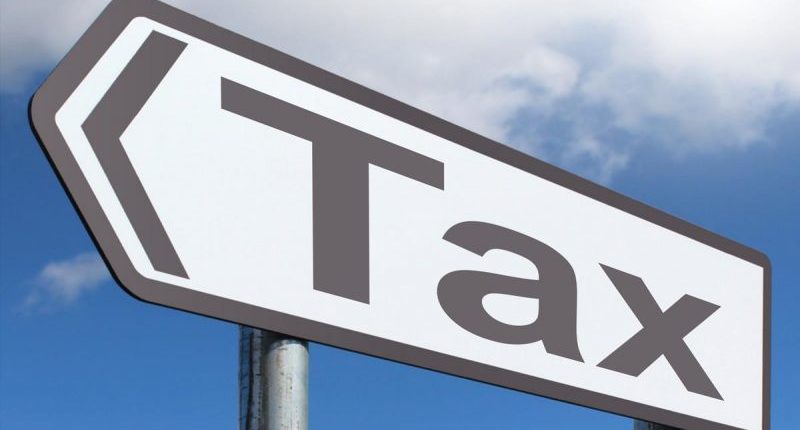The mid of January is when most employers ask their employees to submit their tax-saving proof. This helps employers calculate the extent of TDS deductions to be made on the employees’ salary. As per the income tax rules, employers must collect most of the taxes their employees are liable to pay and deposit the same to the government’s account. This is a move to avoid tax evasion.
This translates to your employer deducting a higher TDS from your salary in the last quarter of the financial year (January, February and March) if you fail to submit your tax-saving proof within the deadline. Your take-home salary can be reduced by up to Rs 46,800 in the last quarter. This may hamper your finances and may require you to redraw your budget.
However, note that you can still save taxes for the current financial year despite failing to submit tax-saving proof within the deadline. For that, you need to make tax-saving investments before 31 March. You can claim a refund of the excess taxes paid in the form of TDS on your salary when filing your ITR. Yet, it is advisable to submit your investment proof to your HR and avoid a higher TDS deduction.
The following are some of the documents that can be submitted to your HR to avoid a higher TDS deduction:
1) Rent Receipts
If you live in rented accommodation, you can claim tax exemption on your house rent allowance (HRA). You have to provide your rent receipts to your HR to claim tax-exemption. The least of the following is allowed as HRA exemption:
- Actual HRA received
- 50% of your basic salary plus DA if you reside in a metro city, it is 40% of basic salary plus DA if you live in a non-metro city
- Amount paid as rent minus 10% of basic salary + DA
If the rent paid in a year exceeds Rs 1 lakh, your landlord should provide his PAN. If not, you are not eligible to claim HRA exemption. If your landlord is not willing to provide his or her PAN, they should give a declaration as per Circular No. 8/2013 dated 10 October 2013. If you live with your parents, you can pay rent to them and claim an HRA exemption. However, the rent received by your parents will be taxable in their hands.
2) Tax-Saving Investment Proof
If you have made investments covered under Section 80C of the Income Tax Act, 1961, then you are eligible to claim tax deductions of up to Rs 1.5 lakh a year. Some of the investments under Section 80C are EPF, PPF, NSC, ELSS, ULIP, SSY, 5-year POTD, tax-saver FDs, and NPS. Most employers auto-accept your EPF/NPS contributions for tax deductions under Section 80C.
In case you have opted for VPF, then such contributions are also eligible for deductions. If you have not made the full utilisation of your Section 80C limit, you may consider investing in an ELSS. Most fund houses and third parties instantly give your investment proof, which helps you submit the same to your HR within the deadline. This may not be the case with other Section 80C investments.
Apart from the tax-saving investments, you may also claim deductions on a home loan’s principal repayment under this Section. Premiums paid towards availing a term life insurance policy are also eligible for tax deductions under Section 80C. Apart from these, children’s tuition fee is also counted towards deductions under this Section.
Also Read: What is Jhatpat Processing Scheme of the Income Tax Department?
3) Insurance Details
Section 80D of the Income Tax Act, 1961, provides tax deductions on the premiums paid towards availing a medical insurance policy. This policy may cover you, spouse, children, and parents. This is over and above the deductions under Section 80C. You have to provide your HR with the proof of payment of insurance premium. You can claim deductions of up to Rs 1 lakh under this Section depending on the age of parents, spouse and yourself. The following table summarises the extent of deduction available under Section 80D:
| Scenario | Premium paid | Deduction available Section under 80D | |
| Self, family, children | Parents | ||
| Individual and parents aged below 60 years | Rs 25,000 | Rs 25,000 | Rs 50,000 |
| Individual and family aged less than 60 years but parents aged above 60 years | Rs 25,000 | Rs 50,000 | Rs 75,000 |
| Both individual, family and parents aged above 60 years | Rs 50,000 | Rs 50,000 | Rs 1,00,000 |
| Members of HUF | Rs 25,000 | Rs 25,000 | Rs 25,000 |
Apart from the deduction on availing a medical insurance policy, you can also claim deductions on the expenses made on preventive health check-up. This is restricted to Rs 5,000 and falls under Section 80D. For instance, if your entitled to claim a deduction of up to Rs 25,000 under Section 80D, and you avail medical policy by paying a premium of Rs 21,000, then you still can claim a deduction of another 4,000. You can do this by undergoing a preventive health check-up. If that costs you Rs 4,000, then you are entitled to make the full utilisation of the limit of Rs 25,000.
4) Education Loan Interest Paid Certificate
If you had availed education loan to pursue higher education in India or abroad, you could claim the interest paid towards the same as deductions under Section 80E of the Income Tax Act, 1961. One thing to note here is that the principal component in the EMI is not eligible for any tax benefit.
The entire amount paid towards the loan is deductible under Section 80E. This deduction is allowed only for the first eight years from the time you start repaying your education loan. You have to provide the interest paid certificate issued by your banker to your HR to claim deductions under this Section.
5) Home Loan Interest Paid Certificate
If you are repaying a home loan, you can claim a tax deduction of up to Rs 2 lakh on the interest paid over the financial year under Section 24. This is for the self-occupied housing property. In case you have let out a house for rent and are repaying the loan availed to purchase it, then the entire amount paid as interest is deductible under Section 24. You have to provide interest paid certificate issued by your banker to your HR to claim deductions under this Section.
Conclusion
It is essential to submit tax-saving proof within the deadline to avoid higher TDS deduction from your salary in the last quarter of the financial year. Failure to submit tax-saving proof may attract TDS deduction of up to Rs 46,800 spread across January, February and March.
For any clarifications/feedback on the topic, please contact the writer at vineeth.nc@cleartax.in
Engineer by qualification, financial writer by choice. I am always open to learning new things.





